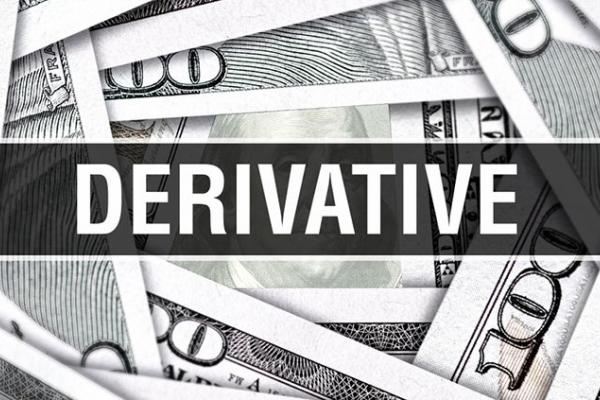Investing has taken on a more complicated side to it over the past 10 to 20 years due to the fact that a selection of different kinds of derivative instruments has been designed. Derivatives themselves have been around even longer than that and in years gone by were used in the farming industry. The way it works is that one party agrees to sell a particular good while another party agrees to purchase the good at a specific price on a specific date. In days past this bartering of both goods and services was sealed with a handshake.
An investment that makes it possible for a person to buy or sell the option on a security is known as the derivative. Derivatives can be described as types of investments whereby the investor does not own the asset that is underlying but instead makes a bet on the direction that the price will move by way of an agreement with another investor.
There is more than one type of derivative instrument. There are options, futures, forward contracts and swaps. Derivatives can be put to use for more than one reason. They have a variety of risks attached to them but generally speaking they are considered to be an alternative means of participating in the financial market.
Derivative Terms
Derivatives can sometimes be difficult to comprehend because they have a language that is all their own. To use an example of this, there are many instruments that have a counterparty. It is the counterparty that is responsible for the opposite side of the trade that is to take place. Be aware that each derivative comes with an underlying asset on which the derivative’s price, basic term structure and risk are based. Remember this- it is the perceived risk of the underlying asset that in turn influences the perceive risk inherent in the derivative.
A derivative’s pricing can also be a complicated concept to understand. The pricing of such may come with a strike price. This means the price at which the derivative can be exercised at. When it comes to fixed income derivatives there may be a call price. A call price is the price at which the issuer is able to convert a security. When it comes to derivatives there are also an array of positions that an investor can decide to take. This can be confusing for the newbie investor to understand. A long position is the name given to the buyer of the derivative while a short position is the name given to the seller.

Derivatives and Your Portfolio
Derivatives are used by investors for three main reasons. The first reason is to hedge a position; the second is to increase leverage and the third is to speculate on the movement of an asset.
Hedging a position is generally done in order to protect against or to insure the risk of a particular asset. For example, if you own shares of a stock and you want protection in the event that the price of the stock falls then you may decide to purchase a put option. If the stock price rises then you have gained because you are the owner of the shares. If the stock price falls then you gain because you own the put option. The potential loss from holding the security in the first place is hedged with the position of the options.
Derivatives can play a significant role when it comes to leveraging. Options are especially valuable when the financial markets are volatile. To explain this another way, when the price of the underlying asset moves a great distance in a positive direction then the movement of that option is magnified.
Speculating on the movement of an asset is a technique that investors put to use when they bet on the future price of an asset. Options provide investors with the ability to leverage their positions. For this reason large speculative plays can take place at a very low cost.
Trading Derivatives
Buying and selling derivatives can take place in two different ways. Some derivatives are traded over-the-counter (OTC) while others are traded on an exchange. The OTC derivatives constitute contracts that are privately arranged between parties. An example of this would be a swap agreement. This market is the bigger of the two and does not have any regulations. On the other hand, derivatives that trade on an exchange are contracts that are standardized. OTC contracts contain counterparty risk because they are private and unregulated while exchange derivatives do not contain this risk because the intermediary is the clearing house.
Types of Contracts
Contracts can be broken down into three types and each type has its own variations. There are options, swaps and futures/forward contracts. Let us take a look at these now.
Options
Options are contracts that offer the right to buy or sell an asset but not the obligation to do so. Option contracts are most often used when an investor does not want to risk taking an outright position in the asset but does wish to increase their exposure in the event that the price of the underlying asset begins to move greatly. There is more than one option trade that an investor can use. The most common ones used include long call, long put, short call and short put.
Long Call
If you have reason to believe that the price of a stock is about to go up then you can buy the right (long) in order to buy (otherwise known as call) the stock. As far as the long call holder is concerned the payoff is positive if the price of the stock exceeds the exercise price by more than the premium that is paid for the call.
Long Put
If an investor feels that a stock price could go down then he can buy the right (long) in order to sell (or put) the stock. For the long put holder the payoff is positive if the price of the stock ends up being below the exercise price by more than the premium that was paid for the put.
Short Call
If as an investor you are concerned that the price of a stock is about to decrease then it is best to write a call or sell it. If you decide to sell the call then the investor who buys the call (the long call) then gets to decide whether the option will be exercised or not. As the short or seller you relinquish control. For the writer of the call the payoff is equal to the premium that is received by the call’s buyer if the stock price does indeed decline. However if the stock price goes up more than the exercise price plus the premium then the call writer will lose money.
Short Put
If you have reason to believe that the price of a stock will increase then you can choose to write a put or sell it. As the put writer the payoff is equal to the premium that comes from the buyer if the stock price goes up. However if the stock price drops below the exercise price minus the premium then money will be lost by the writer.
Swaps
Another type of derivative is a swap. Swaps are such that counterparties exchange cash flows or other variables that are connected with different kinds of investments. It often happens that a swap will take place because one party has an advantage in one specific area (such as borrowing funds under variable interest rates) while another party is able to borrow more freely because of the fixed rate. The simplest variation of a swap is referred to as a “plain vanilla” swap.
There is more than one type of swap. The most common ones include interest rate swaps, currency swaps and commodity swaps.
Interest Rate Swaps
In an interest rate swap two parties can exchange a fixed rate for a loan with a floating rate. If one of the parties has a fixed rate loan but has floating liabilities then that party may decide to swap with another party and by so doing exchange a fixed rate for a floating rate in order to match the liabilities. These kinds of swaps can also take place through option strategies. What is known as a swaption provides the owner with the right to enter into the swap but not the obligation. This is very similar to what happens with an option.
Currency Swaps
When it comes to a currency swap loan payments and principal in one currency are exchanged for the same two things in another currency.
Commodity Swaps
A commodity swap is a contract whereby payments are based on the underlying commodity’s price. The producer in this case can decide what price that the commodity will be sold for while the consumer can decide the price it will be paid for.
Futures/ Forward Contracts
These types of contracts are drawn up for two parties and relate to buying or selling an asset in the future for a particular price. In most cases these contracts are written in reference to the price for the given day (the spot price). The profit or loss of the buyer makes the difference between the spot price at the time of delivery and the future or forward price. Contracts of this kind are used in order to speculate on prices in the future or to hedge risk. Forwards and futures are slightly different. Forwards are non-standard contracts that trade OTC while futures are standardized contracts that trade on exchanges.
